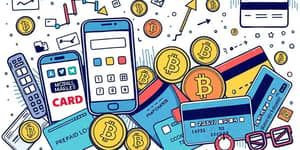
Discovering that your credit card has gone missing can trigger anxiety, stress, and a sense of vulnerability. You may worry about unauthorized charges, identity theft, and the hassle of replacing the card. However, acting swiftly and methodically can greatly mitigate risks and limit your liability. This guide provides a comprehensive roadmap—legal, practical, and emotional—to help you navigate this challenging situation with confidence.
Your first priority is to cut off access to your account and prevent further unauthorized transactions. Most issuers offer instant card freezing or locking features via mobile apps or online banking portals.
Even if you hope the card will turn up in a coat pocket or under the car seat, freezing it buys you time without shutting down your entire account.
After securing your account, vigilantly monitor all recent and upcoming transactions. Fraudsters often test a stolen card with small purchases before attempting larger ones. Spotting these early can provide critical evidence and speed up reimbursement.
Make it a habit to check your statements daily for unfamiliar charges, even if they are just a few dollars. Report any suspicious activity promptly to your issuer’s fraud department.
Once you report the loss, the issuer will dispatch a replacement card. Delivery times and processes vary by bank, but most issuers make this a priority.
Activation instructions arrive with the card. Once you receive it, follow any required steps immediately to avoid delays in your daily spending.
Federal law provides robust consumer safeguards under the Fair Credit Billing Act (FCBA). If you report a stolen or lost card within 60 days of your statement, your liability cannot exceed fifty dollars. Many issuers extend a zero liability policy for truly unauthorized transactions if reported promptly.
However, delays can raise your responsibility. After 60 days, you risk unlimited liability for charges posted before reporting. Knowing your rights empowers you to act quickly and avoid costly oversights.
Getting a fresh card is a relief, but your work isn’t over yet. Update every merchant where you have recurring payments—streaming services, utilities, subscriptions, and digital wallets alike.
Contact each service provider directly to replace stored card details. This prevents late fees, service interruptions, and accidental failed payments.
Continue monitoring your statement closely over the next two billing cycles. Occasionally, fraud attempts surface after replacement when criminals test expired numbers.
Once you’ve secured and replaced your card, reflect on habits that can reduce future risk. Simple routines and smart tools can make your financial life both safer and simpler.
Discovering a stray credit card brings a moral and legal responsibility. Never attempt to use it. Instead, choose the most direct route to return it safely.
Facing a lost or stolen credit card can be emotionally draining. You might feel violated, anxious, or frustrated. Remember that swift, organized action not only secures your finances but restores your peace of mind.
Keep this checklist handy for emergencies:
By taking these steps, you transform a stressful event into a controlled process. You reclaim security and minimize the financial impact of lost or stolen credit cards.
References













